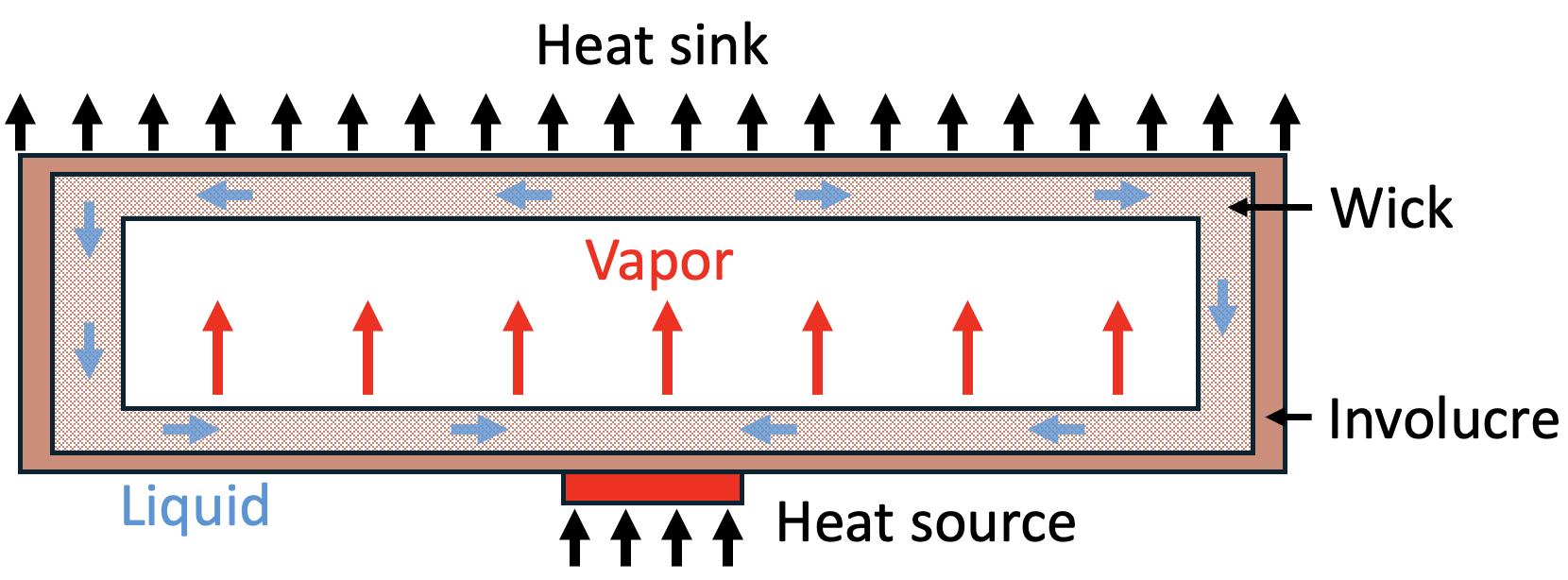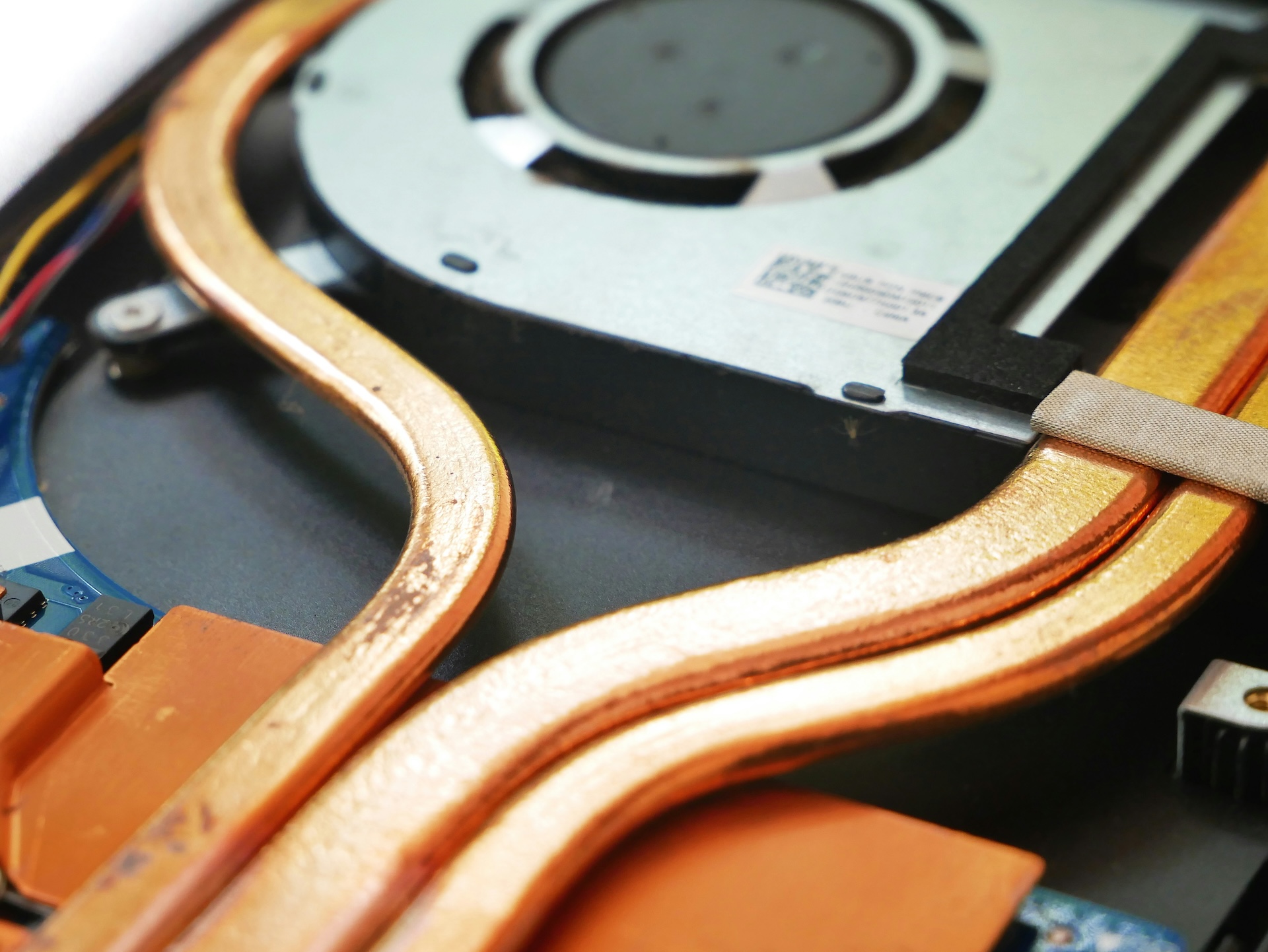Vapor chambers operate similarly to flat heat pipes, featuring a wick structure on one surface that evenly distributes the working fluid. This surface is in direct contact with a concentrated heat source. As the liquid working fluid absorbs heat, it evaporates, and the resulting vapor spreads throughout the chamber’s internal void. The opposite surface is exposed to a cooling source, where the vapor condenses back into liquid form. The condensed fluid then returns to the evaporator via the chamber walls or columns distributed over the device. Typically, vapor chamber evaporators are positioned at the bottom to utilize gravity for fluid movement, though wick structures can also facilitate fluid transfer to the evaporator regions.





